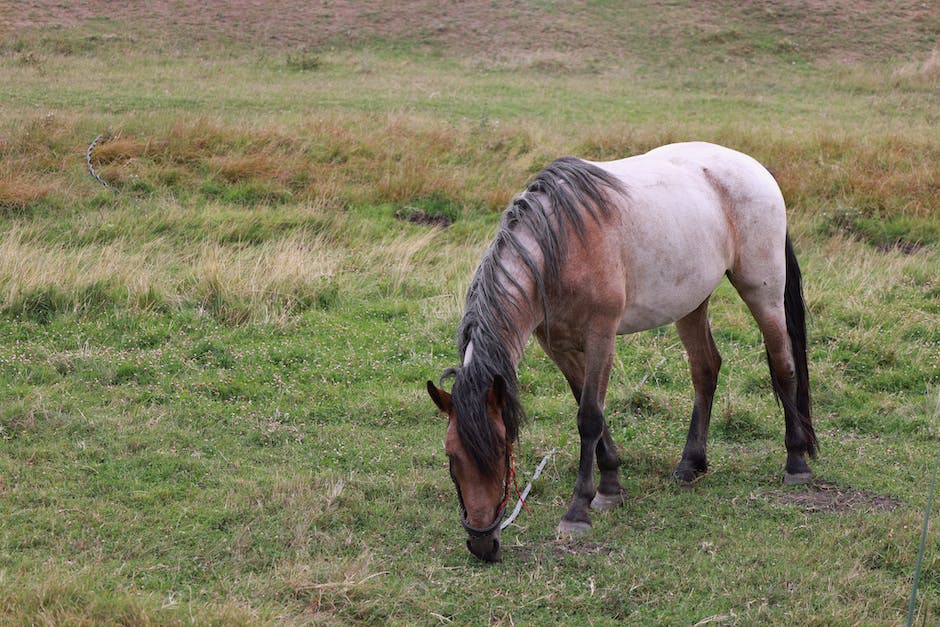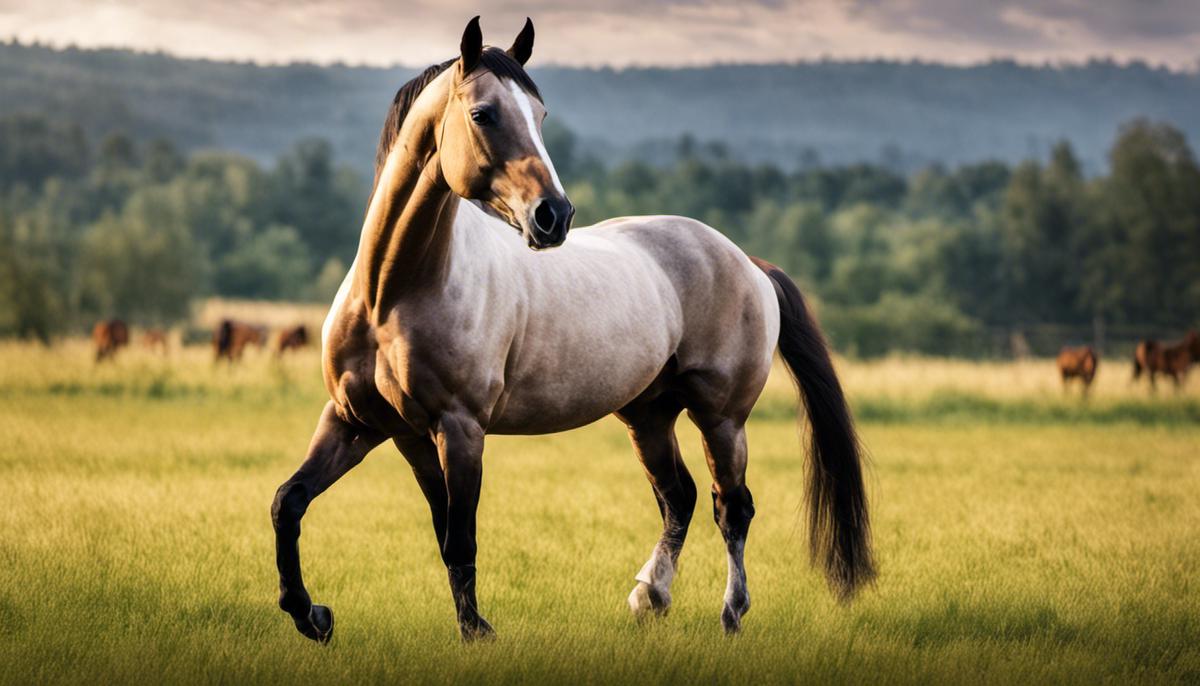The health of Russian Warmbloods, a breed renowned for its endurance and versatility, is of paramount importance to ensure their prosperous survival. It has been observed that these equines are prone to a range of health issues, ranging from simple gastrointestinal conditions to more complex genetic diseases. Through an extensive analysis of veterinary records, scientific research, and breed registries, we can deepen our understanding of the primary diseases, secondary conditions, and genetic predispositions inherent in Russian Warmbloods. Through a comprehensive understanding of their genetic makeup and the potential impact of their lifestyle, we can underscore the importance of nutritional management and preventative care in mitigating and preventing these health challenges.
Table of Contents (Horspedia)
General Health Spectrum of Russian Warmbloods
Title: An Insight into Common Health Issues in Russian Warmbloods: A Scientific Examination
Russian Warmbloods are undeniably majestic creatures; however, like many equine breeds, they encounter a variety of health challenges throughout their lifespan. It cannot be emphasized enough that the intricacies surrounding these health issues require unambiguous comprehension for better management and prevention strategies.
One of the most encountered health concerns in Russian Warmbloods is Chronic Progressive Lymphedema (CPL). CPL is a debilitating condition characterized by progressive swelling and hyperkeratosis in the lower limbs. It results from an abnormal lymphatic function, leading to the accumulation of lymph fluid. Such complications are common in heavy breeds like the Russian Warmbloods due to their sturdy and muscular build.
Furthermore, Osteochondrosis Dissecans (OCD), a developmental orthopedic disease, has been observed in Russian Warmbloods and other breeds. This intricate concern emerges through the interruptions in the endochondral ossification process, leading to joint pain and lameness. Russian Warmbloods’ genetic predisposition and rapid growth rate, coupled with high nutritional intake, make them immensely vulnerable to OCD.
Arteritis, specifically Equine Viral Arteritis (EVA), has also been documented among Russian Warmbloods. EVA is a contagious disease caused by an arterivirus that affects both sexes and is particularly severe in young foals. It’s transmitted through respiratory secretions or sexual contact, resulting in respiratory signs, conjunctivitis, abortion, and occasionally, death.
Additionally, Gastric Ulcer Syndrome (EGUS) is a widespread health affliction in Russian Warmbloods. These ulcers can be found in approximately 90% of athletic horses, demonstrating a dire need for increased surveillance and management practices. EGUS is propitiated by a variety of factors, including stress, improper feeding routines, and medication usage. In its most severe state, EGUS can lead to compromised performance, colic, and even sudden death.
Lastly, Metabolic syndrome, a disorder involving insulin resistance, obesity, and dyslipidemia, is increasingly being recognized in horses, including Russian Warmbloods. This syndrome predisposes them to laminitis, a painful condition involving inflammation of the sensitive layers of tissue inside the hoof.
Each of these conditions calls for improved veterinary intervention strategies. However, prevention, when applicable, remains the best course of action. Proper diet, adequate exercise, and regular vet check-ups can go a long way in ensuring the health and longevity of these horses. It is paramount to also account for genetic predispositions and ensure selective and responsible breeding practices.
Advancing our understanding of these health issues and investing in further research can drastically improve the living conditions and lifespan of the Russian Warmbloods. This unfurls a new leaf in the world of equine science by bettering both disease management and prevention strategies.

Genetic Disorders of Russian Warmbloods
The exploration of genetic disorders unique to the Russian Warmblood breed lays bare a fascinating, if tedious, labyrinth of hereditary traits, gene expressions, and medical implications. Diversity within the breed’s genetic structure potentially predisposes select individuals to a set of illnesses not usually expressed in other breeds. Immersing in an anthology of disorders, we stand prepared to dissect the unique challenges besetting these majestic equines.
Chief amongst these challenges is Polysaccharide Storage Myopathy Type 2 (PSSM2), a gene mutation affecting the skeletal muscle. Drawing parallels to PSSM1, which is more common amongst draft horse breeds and Quarter Horses, PSSM2 is unique to Warmbloods, including the Russian contingent. Manifesting through muscle stiffness, reluctance to move, and often distressing episodes of ‘tying-up’, this myopathy fails to reveal itself through diagnostic muscle biopsy, necessitating a DNA test for identification.
Similarly, Hereditary Equine Regional Dermal Asthenia (HERDA), a potentially devastating skin disorder often found in Quarter Horses, has found itself insidiously infiltrating the Russian Warmblood gene pool. Excessive skin tearing and healing complications are classic manifestations of HERDA. Harnessing the power of DNA testing, a compelling breed-specific predictive model is attainable.
Moreover, intriguing research speaks of a genetic mutation unique to Warmblood breeds, including Russians, that can lead to Warmblood Fragile Foal Syndrome (WFFS). This autosomal recessive disorder manifests itself through hyperextensible skin, hypermobility of joints, and abnormal tendons and ligaments. Affected foals, unfortunately, do not survive beyond infancy. A robust DNA testing regime can identify carriers thus allowing for responsible breeding decisions and reducing the chances of an affected foal being born.
Russian Warmbloods’ susceptibility to malignant hyperthermia (MH), a potentially fatal reaction to certain general anesthetics also merits a mention. Rapid heartbeat, muscle rigidity, and significantly increased body temperature are classic manifestations. Awareness and understanding of MH susceptibility in Russian Warmbloods could actively inform anesthesia protocol, ensuring patient safety and survival during necessary surgical procedures.
A suitable panacea to these ailments leans into genetics and genomic technologies. Unraveling the coded sequences concealed within Russian Warmblood DNA presents a pharmaceutical playground of extraordinary proportion, hinting at a future of genetically conscious horse ownership and breeding. A vigorous push towards desegregating the phenotypic presentation of disease from genetic predeterminations is essential.
In essence, the revelation is simple yet profound. Delicate genetic threads interwoven within the robust physiology of Russian Warmbloods create a paradox where power meets fragility. Combatting this paradox requires the scholarly armor of expertise, research, and implementation, driven by the generative engine of passion and appreciation for the wonderful enigma that is the Russian Warmblood.

Nutritional and Management Related Issues
Delving deeper into the vast world of equine health, let us bring our focus to Polysaccharide Storage Myopathy Type 2 (PSSM2), a glycogen storage disorder prevalent in Russian Warmbloods that often presents as exercise intolerance or muscle weakness. Effective management of this condition necessitates dietary adjustments, primarily by limiting starch and sugar intake while increasing dietary fat as an alternative energy source. This aligns with nutritional requirements designed to fuel muscle function without promoting excessive glycogen accumulation.
Continuing our exploration, we traverse the landscape of Hereditary Equine Regional Dermal Asthenia (HERDA), a genetic skin disease with a propensity in certain equine breeds. Management of this condition mostly revolves around mitigating environmental threats that can exacerbate the skin condition. Research indicates a correlation between nutrient-dense diet comprising of quality proteins, appropriate minerals, and Omega-3 fatty acids to healthier skin condition and reduced symptoms.
Next, we uncover the phenomenon of Warmblood Fragile Foal Syndrome (WFFS), a lethal genetic disorder complicating the breed’s life at birth. WFFS primarily requires responsible breeding measures, as there’s currently no treatment or management. Genetic testing is a crucial tool in identifying carriers and hindering disease propagation.
Advancing our exploration to Malignant Hyperthermia (MH), a pharmacogenetic disorder that triggers life-threatening hypermetabolic crisis among affected horses. Recent advancements have enabled veterinarians to manage this condition better, although they often advise avoiding triggering agents, specifically certain medications. Prevention measures call for conscientious breeding practices involving genetic testing to identify carriers.
Followingly, our lens narrows down to genetic testing and genomic technologies transforming the arena of Russian Warmblood health and management. Genetic testing empowers breeders and horse owners with invaluable knowledge about genetic trait carriers, subsequently reducing the prevalence of inherited disorders. Genomic technologies, evolving rapidly, are poised to revolutionize equine health and management further, supporting effective breeding and improving horse health on a molecular level.
Finally, we peel back layers to expose the core implications of understanding and managing genetic disorders in horse breeding. Severely problematic diseases like HERDA, PSSM2, and MH could be drastically decreased in population frequencies with informed, responsible breeding practices. Harnessing genetic testing for identifying carriers allows breeders to minimize disease transmission, contributing to the overall health and productivity of the breed. Additionally, our glance moves toward what the future holds – with ongoing advances in genetic research, horse ownership and breeding are set to face remarkable progress, welcomed with anticipatory horses’ whinnies.
Abandoning our journey here, it is clear that the road to promoting Russian Warmblood health is a combination of pharmacology, genomics, and targeted nutritional practices. This journey, full of passion, will continue to throw light on the foggy paths of equine health, breeding, and management, shaping the future of the beloved Russian Warmblood.

Preventive Measures and Treatments
Equine health and longevity are reliant on an array of factors, such as responsible breeding practices, nutrition, exercise, and disease prevention. One must also consider genetically inherited conditions that may affect the overall wellness of Russian Warmbloods, specifically Polysaccharide Storage Myopathy Type 2 (PSSM2), Hereditary Equine Regional Dermal Asthenia (HERDA), Warmblood Fragile Foal Syndrome (WFFS), and Malignant Hyperthermia (MH).
PSSM2, a muscle disorder, results in exercise intolerance and muscle weakness, posing significant threat to a horse’s athletic performance. Identifying this condition early and implementing dietary adjustments can significantly enhance a horse’s health, leading to improved muscle tone and overall performance.
HERDA, on the other hand, is a genetic skin disease. Afflicted horses exhibit fragile skin that tears easily, and are particularly sensitive to environmental threats. Here, a nutrient-dense diet, focused on promoting skin health, can prove invaluable.
WFFS, another genetic disorder, primarily affects newborn foals. They display a range of symptoms from skin and joint laxity to severe birth defects. Given the severity of this condition, no viable treatment exists; prevention measures through responsible breeding and genetic testing are advise.
MH is a pharmacogenetic disorder that results in a hypermetabolic crisis when afflicted horses are exposed to certain triggering anesthetics or extreme stress. Here, prevention measures primarily revolve around avoiding triggering agents. However, genetic testing can also elucidate carriers of the disorder, leading to better management practices.
Technological advancements are revolutionizing our understanding of these complex genetic diseases in Russian Warmbloods. With the advent of genetic testing and the application of genomic technologies, there’s now a way to identify carriers of genetic defects more accurately.
In depth knowledge of genetic disorders is crucial in horse breeding, the focus being the gradual reduction of severe diseases within the breed’s population. With careful breeding strategies, and by minimizing the disease transmission from carriers, the health of the breed can be significantly elevated.
Lastly, the exponential growth in genetic research opens exciting new directions for horse ownership, breeding, and care. Scientists are now leveraging this data to understand disease mechanisms better, which will eventually lead to enhanced disease management and preventative strategies. This growing field of study carries profound implications for Russian Warmbloods’ health and longevity, and indeed for equine health in general.
In conclusion, progress in equine health and breeding hinges on our ability to adapt to advances in genetic research and capitalize on these discoveries. As the understanding of equine genetics deepens, the future of Russian Warmbloods’ health and longevity looks evermore promising.

From this wide-ranging analysis, it is evident that the health of Russian Warmbloods is intricate and multifactorial, requiring considerate understanding and constant attention. Providing these magnificent equines with a balanced diet, consistent physical activity, and adequate preventive measures, can not only improve their quality of life but also potentially extend their lifespan. Further, genetic studies hold great promise for pinpointing and addressing inheritable disorders that may be more prevalent within this breed. Irrespective of the nature of these challenges, a committed approach to their health and wellbeing will ensure the longevity and prosperity of Russian Warmbloods, and uphold the genetic richness they bring to the equine world.

